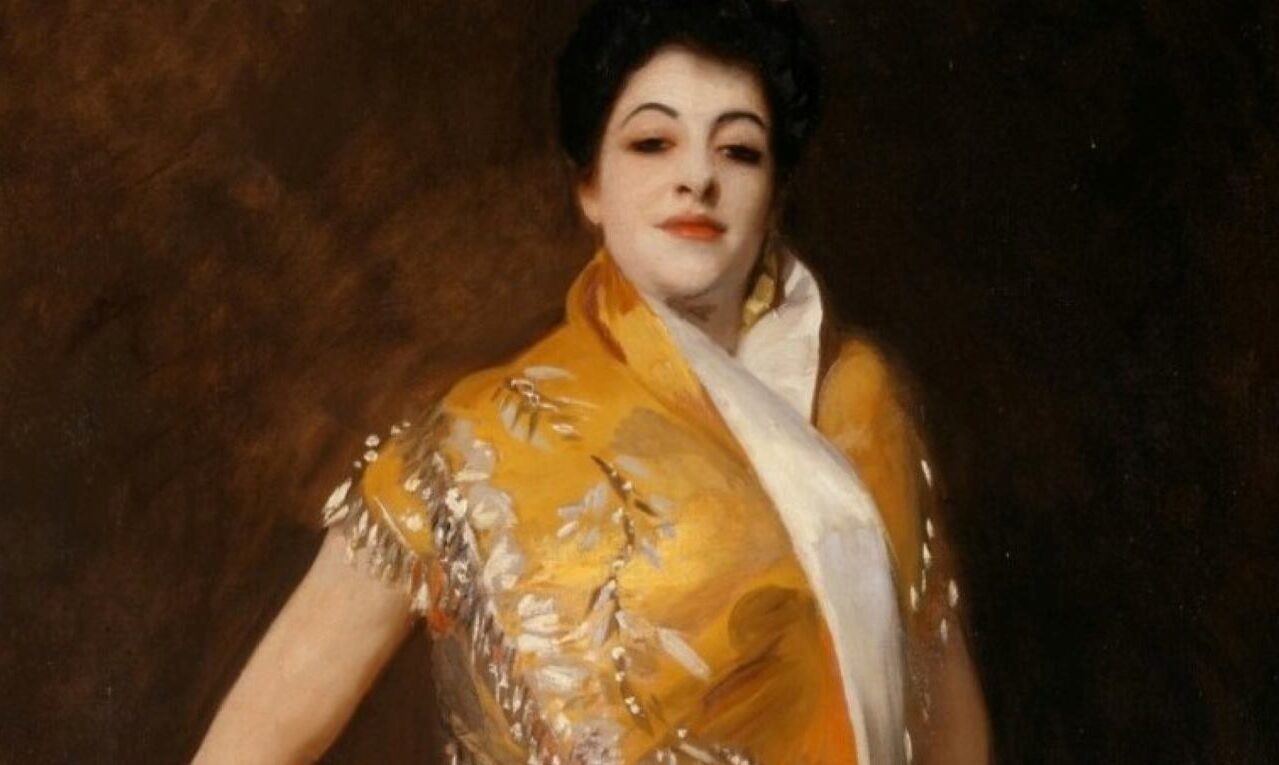Carmencita was a bailaora from Almería who triumphed in the USA at the end of the the 19th century and who has the “title” of being the first woman filmed for the cinema by Edison himself.

Carmencita por Sargent. Foto: Librería Congreso EE.UU.
With the permission of the brilliant and marvellous Carmen Amaya, there was another very famous bailaora in the USA before her. Her nickname was Carmencita and her passage through the American country was widely followed by the newspapers, which talked (and not always well) as much or more about her scandalous private life than about her flamenco art.
Thomas Alva Edison, the inventor of the Kinescope, the forerunner of cinema (silent, at that time), filmed her for 21 seconds, making her the first woman to be an “actress” without intending to be. The video of this filming, is below the lines of this post.
Who was Carmencita?
Although this dancer was nicknamed “the pearl of Seville”, Carmencita was born in Almería with the name of Carmen Daucet or Dauset, depending on who tells the story, around 1867. She learned to dance flamenco as a child and by the age of 12 she was an artist who performed successfully in Seville, Malaga, and Paris. It was his sister who taught him and, by the way, who married the cantaor Rojo el Alpargatero, who was very close to the cantes mineros.
Like many artists of the time, she went to the Universal Exhibition in Paris in 1889 to perform in front of French people who adored (and still adore) flamenco, and a kind of producer-entrepreneur, Bolshoi Kiralfy, persuaded her to go to New York. And the woman from Almeria is encouraged.
A gypsy dancer on Broadway
After a trans-Atlantic voyage, Carmencita arrives in New York and, with no time to rest, performs at the Niblos ‘s Garden Theatre on Broadway in a comic musical called Antiope.
He immediately became the main figure in this work and in the tour of several cities with this Antiope, as described in the media in the newspaper El País:
“Sometimes she writhed with the sinuousness of a snake; sometimes her head hung and her arms moved slowly in time to the music; sometimes her body swayed gently in circles. Then the music went faster and Carmencita seemed to be carried by it”.
Star life
It would not end well with the businessman who took her to the USA to join Antiope, but she soon found other jobs and never returned to Spain. Besides, he realized that to make money, he would be a vaudeville star. With this style, he became a star, although he danced peteneras and jotas in his way. Her way of dancing was called Carmencita, in honor of her name. He filled Madison Square Garden with more than 8,500 spectators.
He roamed the streets with a huge St Bernard and bought jewelry, although he sent money to his parents regularly. For a time, it is known that her brother-in-law, Rojo El Alpargatero, would also perform in the same theatres, perhaps “plugged” by her. The newspapers spoke of his scandalous parties, orgies, his sensuality… Stories emerged of men in love whoo lost their fortune and honor in the effort to conquer her, a femme fatale.
Carmencita, muse of great painters and even of Antonio Machado

This Yankee Spaniard, and so French,
which is the whole of Spain – for the world
a burning in the eyes, which comes to him
of a satirical virgin’s heart.
blesspan, by the wounds and the flowers.
Carmencita, the first flamenco in the cinema
Thomas Alva Edison, in addition to being the inventor of the light bulb and other geniuses, invented the concept of the film reel for use in cameras to obtain moving images. Therein lies the beginning of silent films. In 1913, he combined this camera with the phonograph and the first sound films appeared.
Around the beginning of 1894, Edison asked the already famous Carmencita to come to his studio to film her. So 21 seconds after a dance in front of the camera and… the first woman to be filmed for the cinema! A bit of a scandal too, because her petticoats are slightly visible.
A few months later, Carmencita left the American continent for Europe, only to return and die in mysterious circumstances in 1910.
The film of the flamenco dancer from Almería is preserved as a historical treasure in the Library of Congress in the United States. This is Carmencita in action:
